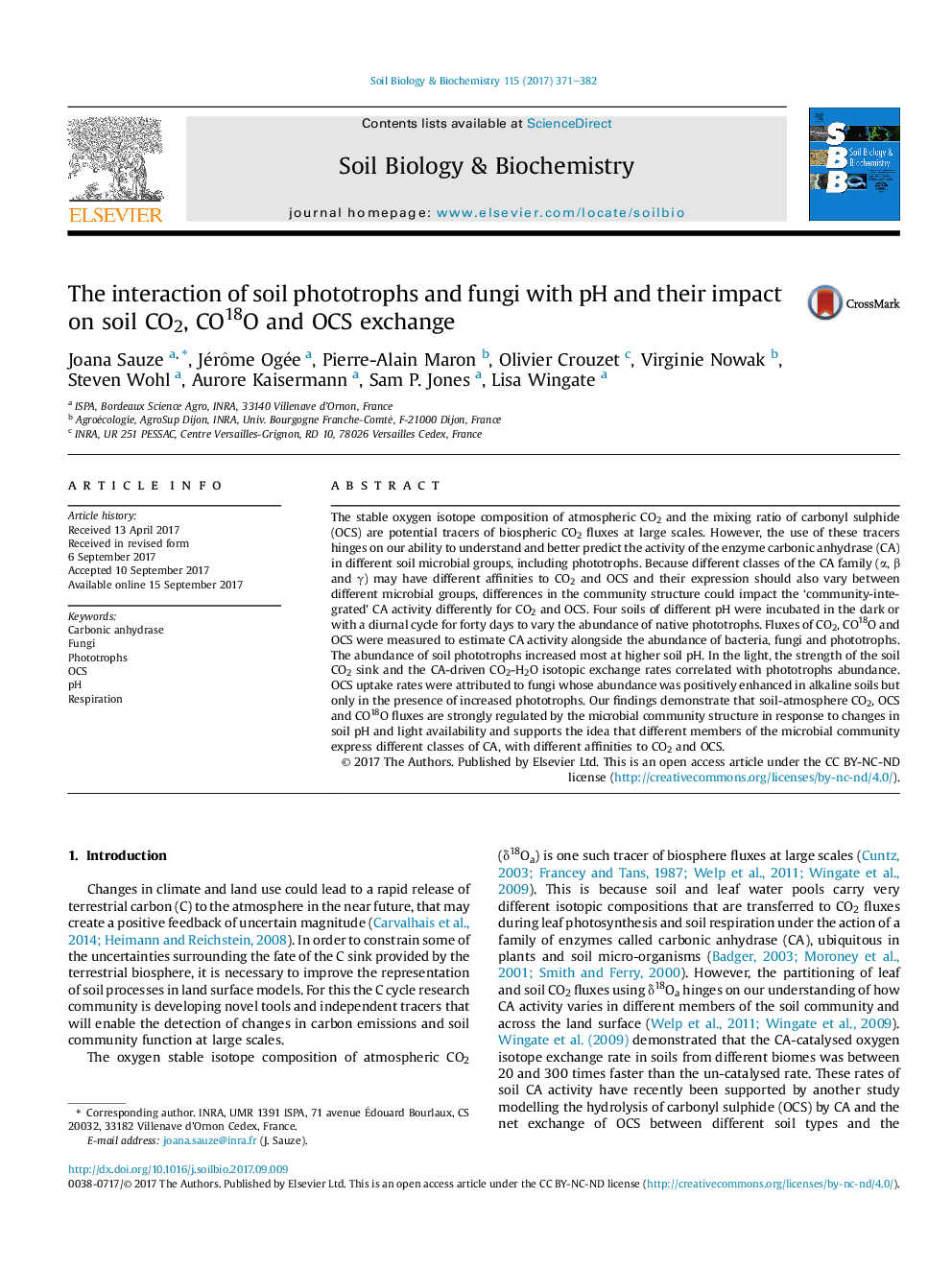| Article ID | Journal | Published Year | Pages | File Type |
|---|---|---|---|---|
| 5516258 | Soil Biology and Biochemistry | 2017 | 12 Pages |
â¢microbial community structure respond to changes in soil pH and light availability.â¢algal abundance strongly drove soil CO2 flux and CO2-H2O isotopic exchange rate.â¢fungal abundance increased in the presence of increased phototroph abundance.â¢soil OCS uptake rates were significantly linked to fungal abundance.â¢each microbial community member expressed different affinities to CO2 and OCS.
The stable oxygen isotope composition of atmospheric CO2 and the mixing ratio of carbonyl sulphide (OCS) are potential tracers of biospheric CO2 fluxes at large scales. However, the use of these tracers hinges on our ability to understand and better predict the activity of the enzyme carbonic anhydrase (CA) in different soil microbial groups, including phototrophs. Because different classes of the CA family (α, β and γ) may have different affinities to CO2 and OCS and their expression should also vary between different microbial groups, differences in the community structure could impact the 'community-integrated' CA activity differently for CO2 and OCS. Four soils of different pH were incubated in the dark or with a diurnal cycle for forty days to vary the abundance of native phototrophs. Fluxes of CO2, CO18O and OCS were measured to estimate CA activity alongside the abundance of bacteria, fungi and phototrophs. The abundance of soil phototrophs increased most at higher soil pH. In the light, the strength of the soil CO2 sink and the CA-driven CO2-H2O isotopic exchange rates correlated with phototrophs abundance. OCS uptake rates were attributed to fungi whose abundance was positively enhanced in alkaline soils but only in the presence of increased phototrophs. Our findings demonstrate that soil-atmosphere CO2, OCS and CO18O fluxes are strongly regulated by the microbial community structure in response to changes in soil pH and light availability and supports the idea that different members of the microbial community express different classes of CA, with different affinities to CO2 and OCS.
